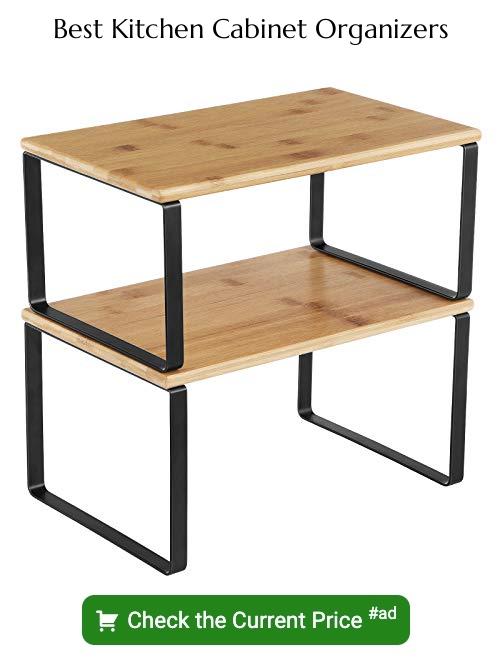Last updated on
Discover the practical approach to expanding your kitchen storage by learning how to add more cabinets seamlessly and effectively.
The kitchen is the heart of every home, and keeping it organized and clutter-free can be a challenge. One of the best ways to create more storage space in your kitchen is by adding cabinets.
Not only do they provide ample storage for all your pots, pans, and dishes, but they also add style and functionality to your cooking space. In this article, we’ll explore some clever tips on how to add more cabinets in your kitchen without breaking the bank or sacrificing style.
So whether you’re looking for extra storage or just want to update the look of your kitchen, read on for some great ideas!
What's Inside
Assessing Kitchen Space
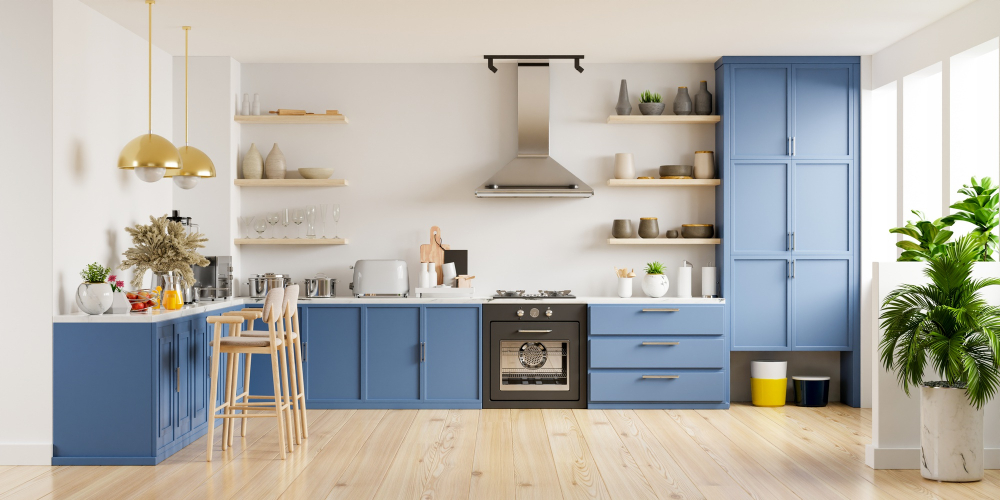
Before you start adding more cabinets to your kitchen, it’s essential to assess the available space. Take a good look at your kitchen and determine where you can add more storage without making the room feel cramped or cluttered.
Consider factors such as traffic flow, counter space, and existing cabinetry when planning for additional cabinets.
One of the best ways to maximize storage in a small kitchen is by using vertical space. Installing wall-mounted cabinets can provide ample storage while keeping valuable floor space free for other uses.
Base cabinets are also an excellent option if you have enough room on your floor plan.
Another thing to consider is whether custom or prefabricated cabinetry will work better for your needs and budget. Custom-made units offer flexibility in terms of design but come with higher costs than pre-built options.
Types of Kitchen Cabinets
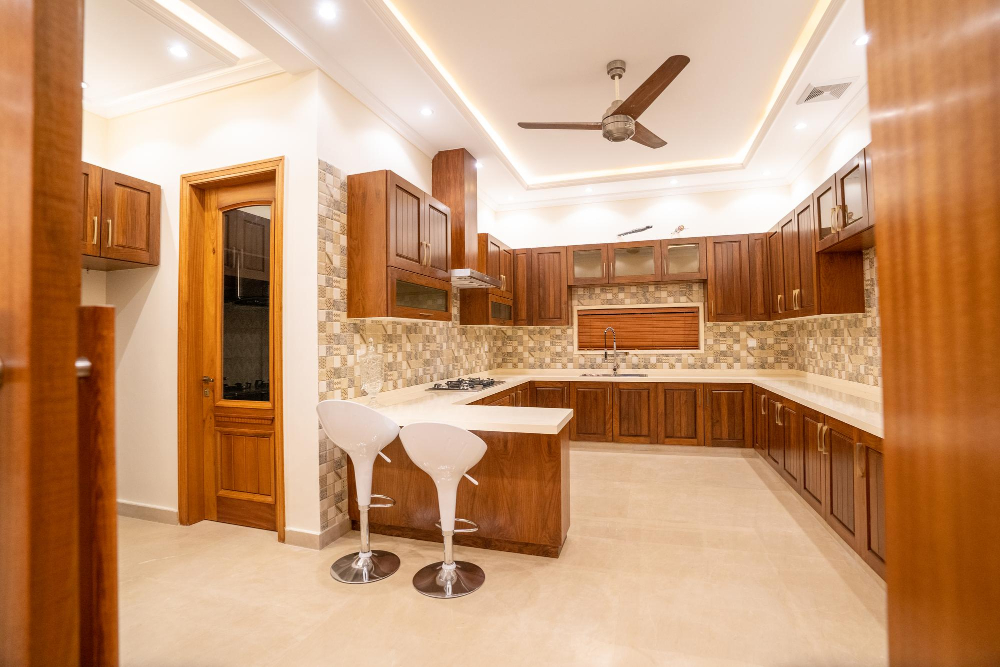
The most common types include wall-mounted or upper cabinets and base or lower cabinets. Wall-mounted cabinets are installed above the countertop and provide additional storage space for dishes, glasses, and other items that you use frequently in the kitchen.
Base or lower cabinetry is typically used for storing larger items such as pots, pans, baking sheets, and small appliances like blenders or mixers. These can be customized with pull-out drawers that make accessing your cookware a breeze.
Other popular cabinet styles include corner units which maximize otherwise unused space by providing easy access to hard-to-reach areas; island/peninsula units which add extra counter space while also providing ample storage underneath; open shelving which creates an airy feel while displaying decorative pieces alongside functional ones; freestanding units that offer flexibility when it comes time for rearranging furniture layouts within the room.
Choosing the right type of cabinet depends on how much storage you need as well as your personal style preferences.
Choosing Cabinet Materials
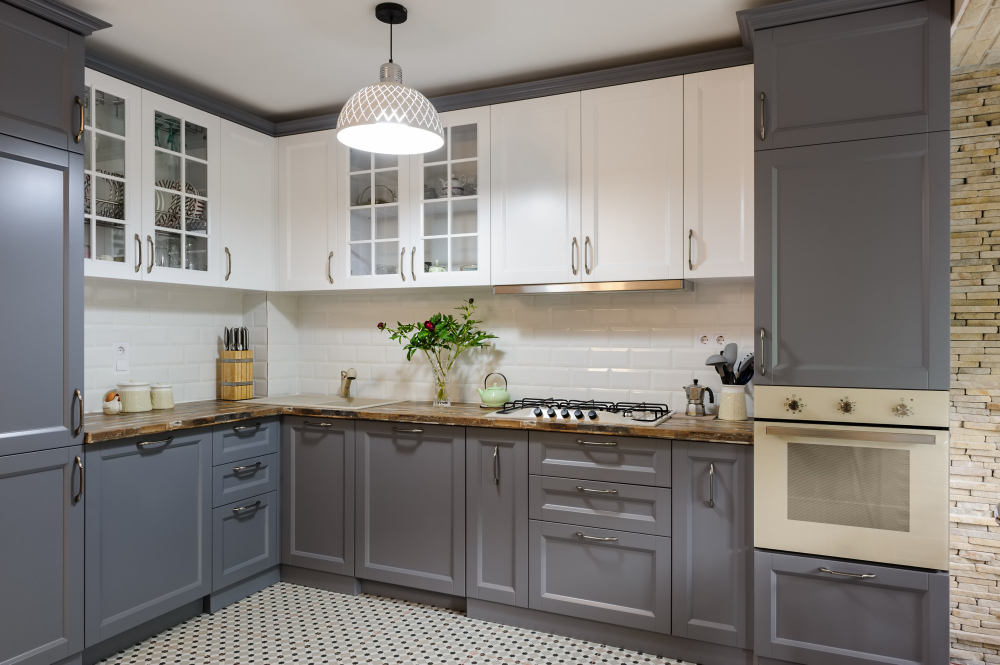
The most popular materials for kitchen cabinets include wood, laminate, metal and glass. Wood is the most traditional choice and offers a classic look that never goes out of style.
It’s also durable and can be stained or painted in a variety of colors.
Laminate is another popular option as it’s affordable and easy to clean. It’s made from layers of paper or fabric that have been impregnated with resin for strength.
Metal cabinets offer an industrial look that works well in modern kitchens while glass-fronted cabinets add elegance to any space by showcasing your favorite dishes or decorative items.
Ultimately, the material you choose will depend on your personal taste as well as your budget constraints.
Custom Vs. Prefabricated Cabinets
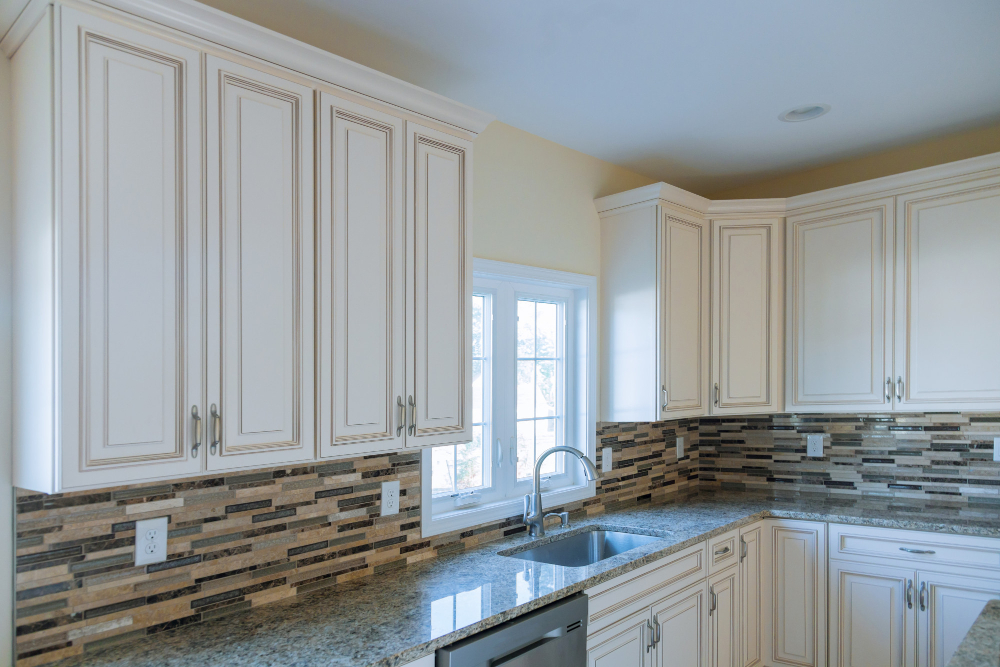
Custom cabinets are built specifically for your space and needs, while prefabricated cabinets come pre-made and can be easily installed.
Custom cabinets offer a lot of flexibility in terms of design and functionality. You can choose the exact size, shape, color, material, and hardware that you want to match your kitchen’s style perfectly.
However, they tend to be more expensive than prefabricated ones due to their unique nature.
Prefabricated cabinets are a great option if you’re on a budget or need something quickly installed without much hassle. They come in standard sizes with limited customization options but still provide ample storage space for most kitchens.
Cabinet Door Styles & Hardware
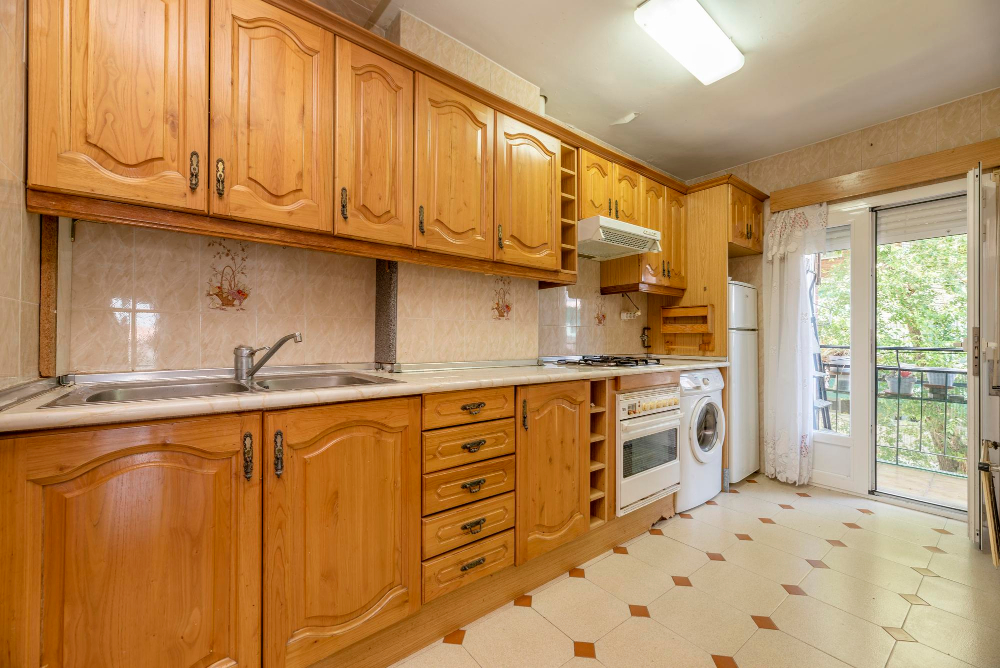
Cabinet doors come in a variety of styles, from traditional raised panel to modern flat-panel designs. You’ll want to choose a style that complements your kitchen’s overall aesthetic while also providing functionality.
Hardware is another important consideration when selecting new cabinets. Handles and knobs are available in various finishes such as brushed nickel or oil-rubbed bronze, which can add an extra layer of sophistication or warmth depending on what you prefer.
It’s essential to keep both form and function in mind when selecting cabinet doors and hardware for your kitchen renovation project.
Maximizing Vertical Space
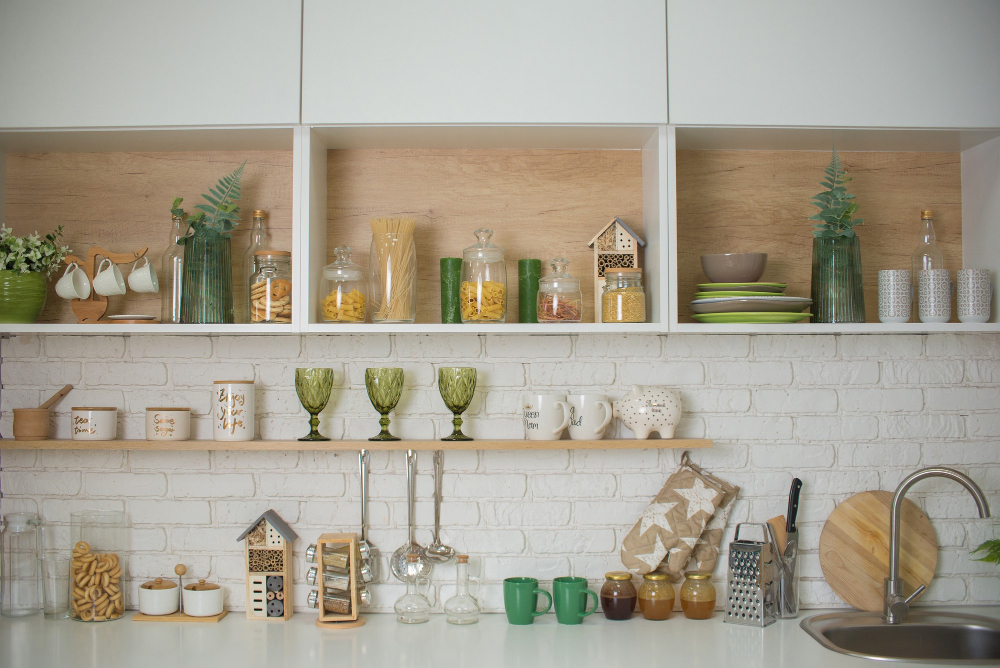
Utilizing this often-overlooked area can provide you with plenty of extra storage without taking up valuable floor space. One way to maximize vertical space is by installing tall cabinets that reach all the way up to the ceiling.
This not only provides additional storage but also draws the eye upward, making your kitchen feel larger and more spacious.
Another option for maximizing vertical space is by using open shelving or hanging racks on walls or above countertops. These are perfect for storing frequently used items such as spices, utensils, and cookbooks while keeping them within easy reach.
If you have a small kitchen with limited counter and cabinet spaces, consider investing in a rolling cart or freestanding pantry that can be easily moved around when needed.
Installing Wall-Mounted Cabinets
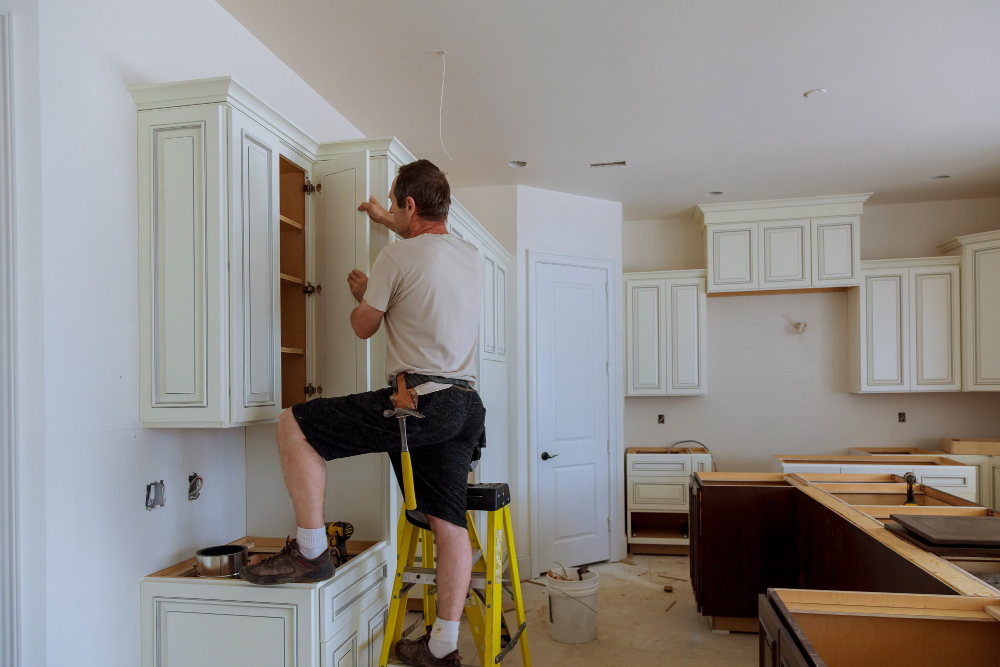
They can be installed above countertops or appliances, and they come in a variety of sizes and styles to fit any kitchen design. Before installing wall-mounted cabinets, it’s important to assess the strength of your walls and locate the studs for proper support.
To install wall-mounted cabinets, you’ll need some basic tools like a drill, screws, leveler tool as well as an extra pair of hands for assistance. Start by measuring the height at which you want your cabinet mounted on the wall then mark that point with pencil marks on both sides where you will attach brackets or cleats.
Next step is attaching brackets/cleats onto marked points using screws (make sure they’re long enough) into studs behind drywall so that there’s no risk of falling off later down line due weight distribution issues caused by uneven mounting surfaces such as plasterboard walls etcetera). Once these are securely attached use them as guides when positioning cabinet against them before screwing it into place too.
When installing multiple units side-by-side make sure all measurements match up perfectly otherwise gaps may appear between each unit once hung causing unsightly appearance overall look. Installing wall-mounted cabinets is not only practical but also adds style and functionality to any kitchen design while freeing up valuable counter space below.
Adding Base Cabinets
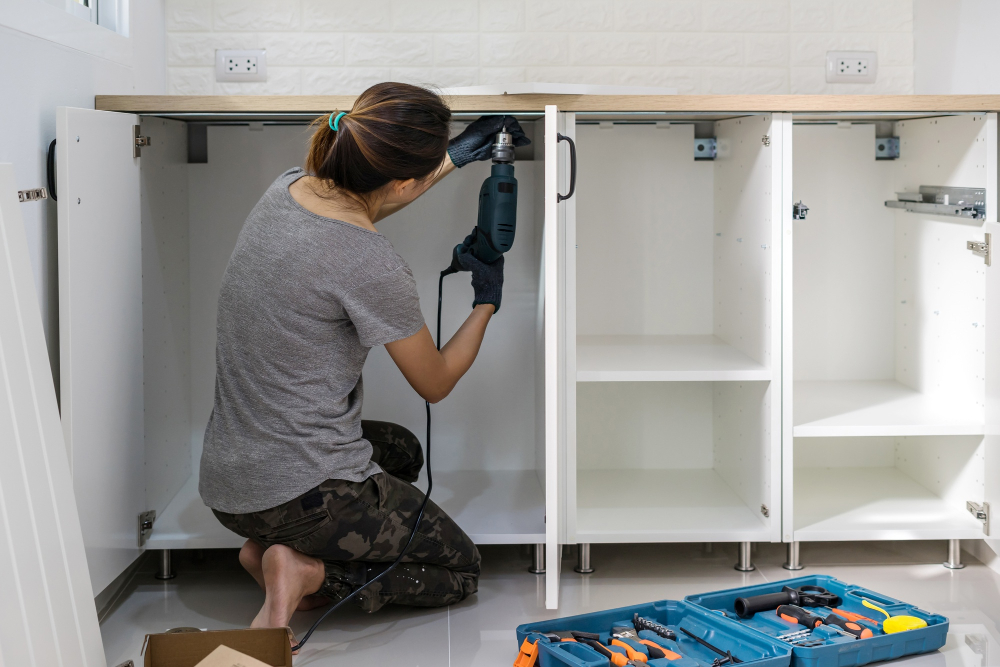
When adding base cabinets to your kitchen, it’s important to consider the layout and functionality of your cooking space. Start by measuring the area where you want to add the new cabinet(s) and determine how much storage you need.
Next, choose a style that complements your existing cabinetry or opt for a contrasting look if you’re going for a bold statement. You can also mix-and-match different styles or colors of base cabinets to create visual interest in your kitchen.
When installing new base cabinets, make sure they are level and secure before attaching countertops or other fixtures on top. It’s also important to ensure that there is enough clearance between adjacent appliances like refrigerators or dishwashers so that doors can open freely without obstruction.
Utilizing Corner Cabinets
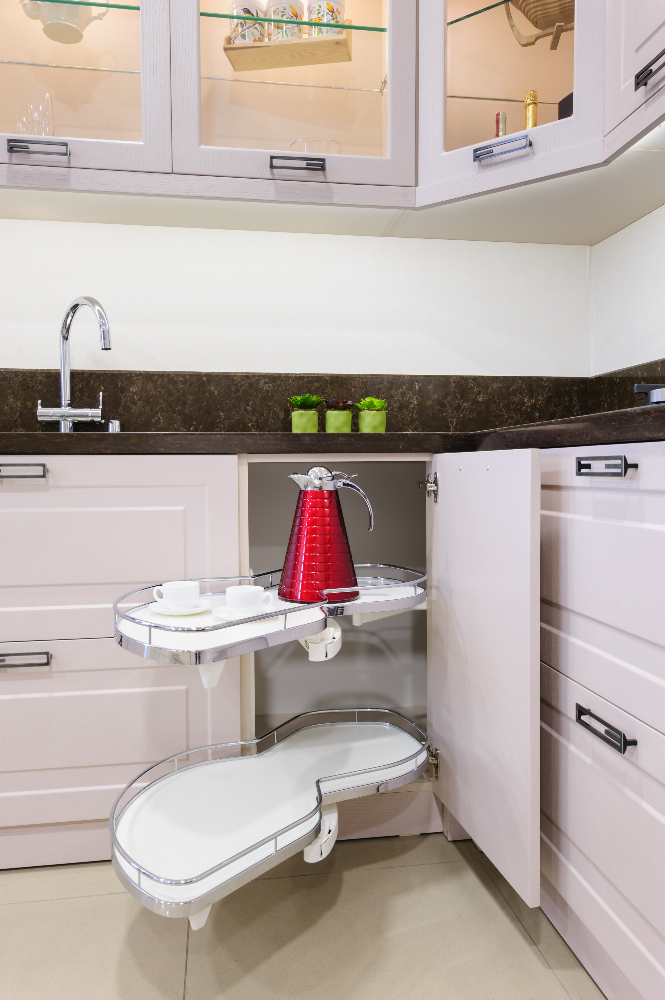
One of the best ways to make use of corner cabinets is by installing a lazy Susan or pull-out shelves. These options allow you to easily access items in the back of the cabinet without having to dig through everything else.
Another option for utilizing corner cabinets is by adding diagonal drawers or open shelving units. Diagonal drawers are designed specifically for corners and provide easy access while maximizing storage space.
Open shelving units are perfect for displaying decorative items such as dishes, glasses, and vases.
When it comes down to choosing which type of solution works best for your kitchen layout and needs, consider factors like accessibility, functionality and style preferences.
Island and Peninsula Cabinets
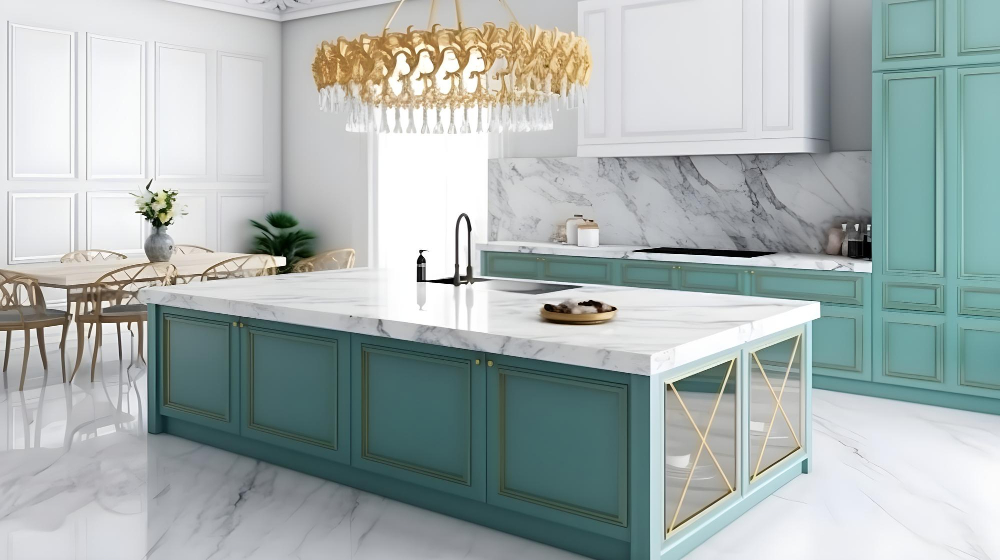
Islands are freestanding cabinets that can be placed anywhere in the kitchen, while peninsula cabinets are attached to one wall and extend into the room. Both options provide extra counter space for food preparation, cooking, or entertaining guests.
When choosing island or peninsula cabinets, consider their size and shape carefully. They should complement your existing cabinetry style and fit seamlessly into your kitchen’s layout without obstructing traffic flow.
You can customize these types of cabinets with various features such as built-in appliances like stovetops or sinks, drawers for utensils storage or even wine racks! you may want to consider adding seating around the island if you have enough space available.
Installing Open Shelving
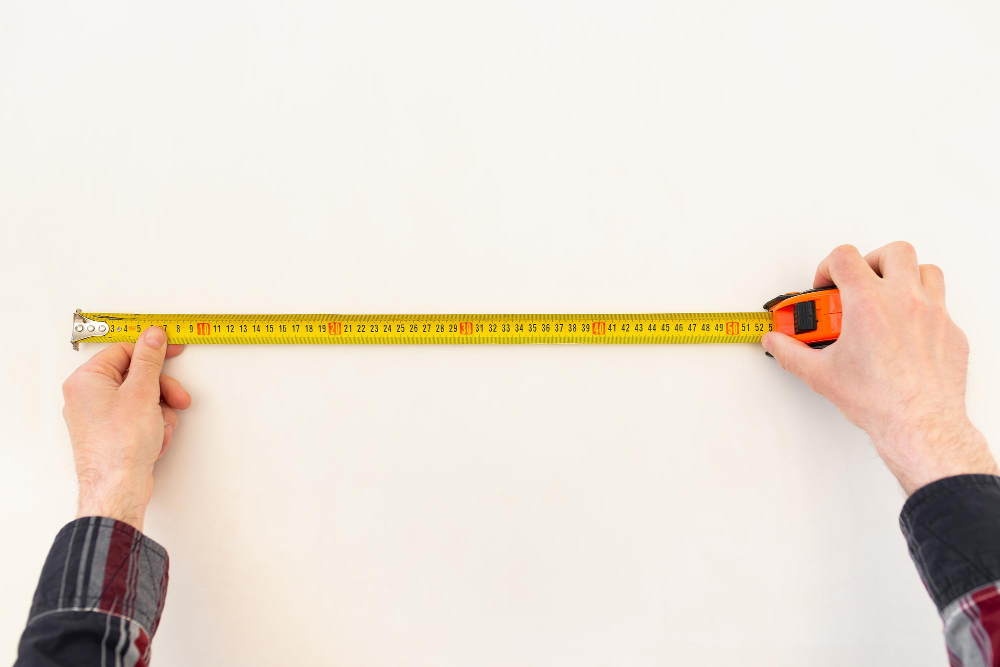
It’s an excellent way to display your favorite dishes, glasses, and other kitchen items while keeping them within easy reach. Installing open shelves is relatively simple compared to adding cabinets, making it a great DIY project for homeowners who want to save money on installation costs.
Before installing open shelves in your kitchen, you need first to decide where they will go and how many you need. Assess the available wall space in your kitchen carefully and determine which areas would benefit most from additional storage or decorative displays.
Once you’ve decided on the location of the open shelves, measure out their dimensions accurately using a tape measure or laser level tool. Next, choose brackets that match the style of your existing decor or opt for something unique if you’re looking for an eclectic look.
When installing open shelving brackets onto drywall surfaces without studs behind them (which can be tricky), use toggle bolts instead of screws as they provide more support than regular screws alone do.
Using Freestanding Cabinets
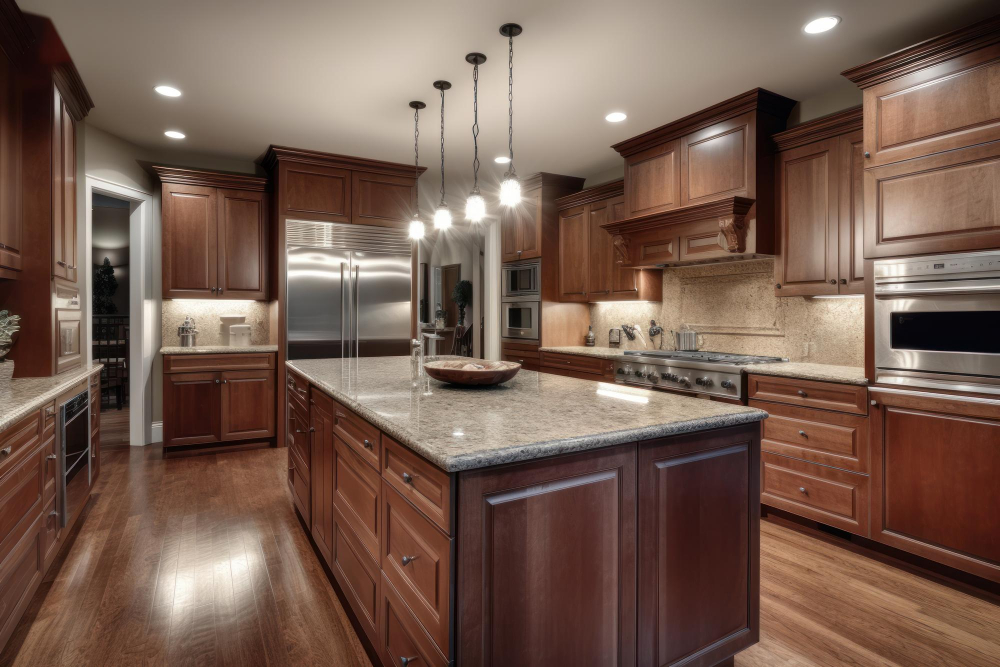
They come in various sizes and styles, making them perfect for any kitchen layout. Unlike built-in cabinets that require installation, freestanding cabinets can be moved around the kitchen as needed.
One of the biggest advantages of using freestanding cabinets is their versatility. You can use them to store anything from dishes and cookware to small appliances and pantry items.
Plus, they come in different materials such as wood or metal with varying finishes that will complement your existing decor.
Another benefit of using freestanding cabinetry is its affordability compared to custom-built options or even prefabricated ones which may require professional installation services.
Adding Pull-out Drawers
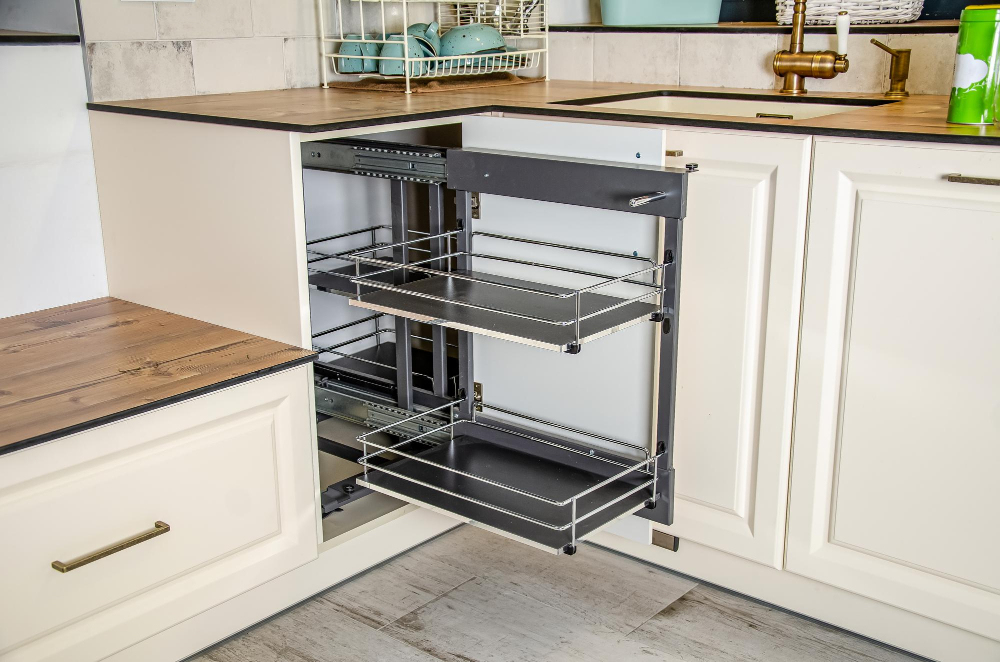
These types of drawers are designed to slide out smoothly, allowing you to easily access items stored at the back of cabinets without having to reach or bend over awkwardly. Pull-out drawers can be installed in both base and wall-mounted cabinets, making them a versatile option for any kitchen layout.
When adding pull-out drawers, it’s essential first to assess the size and shape of your existing cabinet space. You’ll need enough room for the drawer box itself as well as any hardware required for installation.
Once you’ve determined that there is sufficient space available, you can choose from a variety of pre-made options or have custom-sized pull-outs built specifically for your needs.
Pull-out drawer systems come with different features such as soft-close mechanisms that prevent slamming shut when closing them gently; full-extension slides which allow complete access even if they’re located deep inside; adjustable dividers so that everything stays organized within each drawer section; wire baskets which provide ventilation while keeping things visible at all times.
Cabinet Organization Solutions
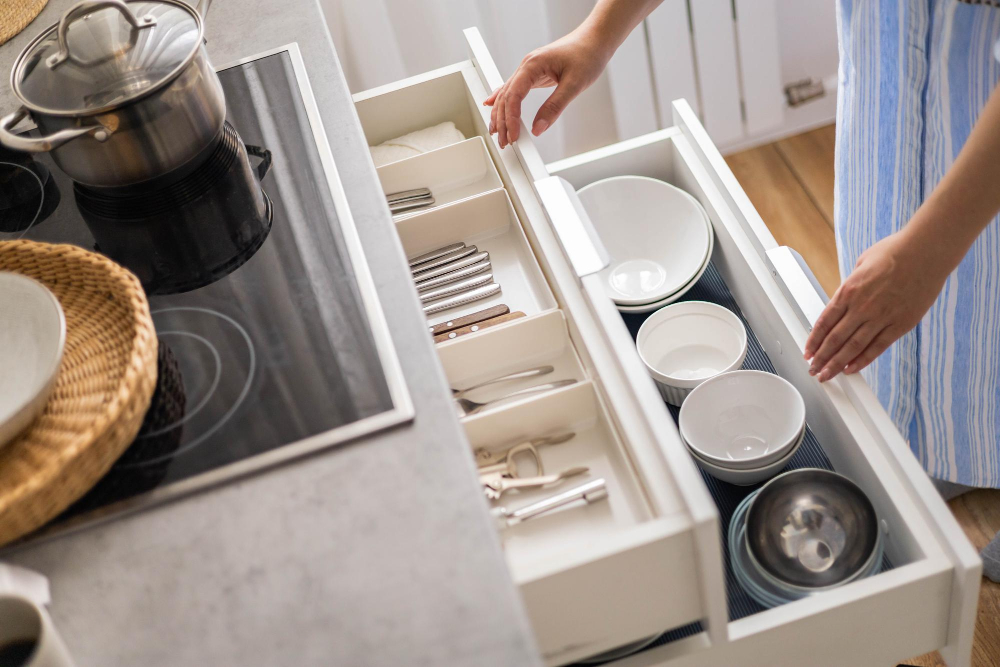
A cluttered and disorganized cabinet defeats the purpose of adding more storage space in the first place. Fortunately, there are many cabinet organization solutions that can help keep your kitchen tidy and functional.
One popular solution is installing pull-out drawers or shelves inside cabinets. These allow for easy access to items stored at the back of deep cabinets without having to reach or bend down awkwardly.
Another great option is using drawer dividers for utensils, cutlery, and other small items that tend to get jumbled together in a messy drawer.
If you’re a wine lover, consider adding wine storage racks under your upper cabinets or on an unused wall space near your bar area.
Under-cabinet lighting not only adds ambiance but also helps illuminate dark corners where it’s hard to see what’s stored inside those deep lower-level cupboards.
DIY Cabinet Projects

One popular option is to build your own custom cabinets using basic woodworking skills and tools. This allows you to create a unique look for your kitchen while also maximizing the available space.
Another great DIY project is adding pull-out drawers or shelves inside existing cabinets. These can be purchased as kits from most home improvement stores and installed with minimal effort.
For those who want a quick update without the hassle of building new cabinets, consider painting or refinishing existing ones instead. A fresh coat of paint in a bold color can instantly transform the look of your kitchen while also protecting the wood from wear and tear.
No matter which DIY project you choose, make sure to take accurate measurements before starting any work so that everything fits perfectly into place once completed.
Under-Cabinet Wine Rack
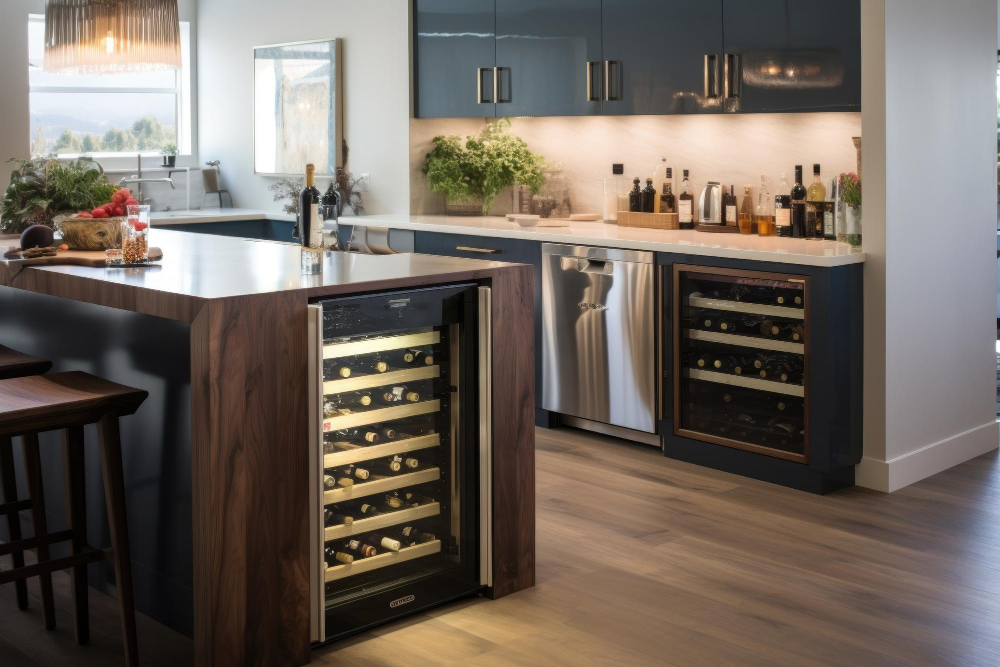
Not only does it provide a stylish way to store your favorite bottles of vino, but it also frees up valuable counter space. Under-cabinet wine racks come in various styles and sizes, so you can choose one that fits your kitchen’s decor and storage needs.
When selecting an under-cabinet wine rack, consider the number of bottles you want to store and how much space is available underneath your cabinets. Some models hold just a few bottles while others can accommodate up to 12 or more.
Installation is relatively easy with most models requiring only screws or adhesive strips for mounting. Once installed, simply slide in your favorite wines for convenient access whenever needed.
An under-cabinet wine rack not only adds functionality but also serves as an eye-catching design element in any kitchen setting.
Drawer Dividers for Organization
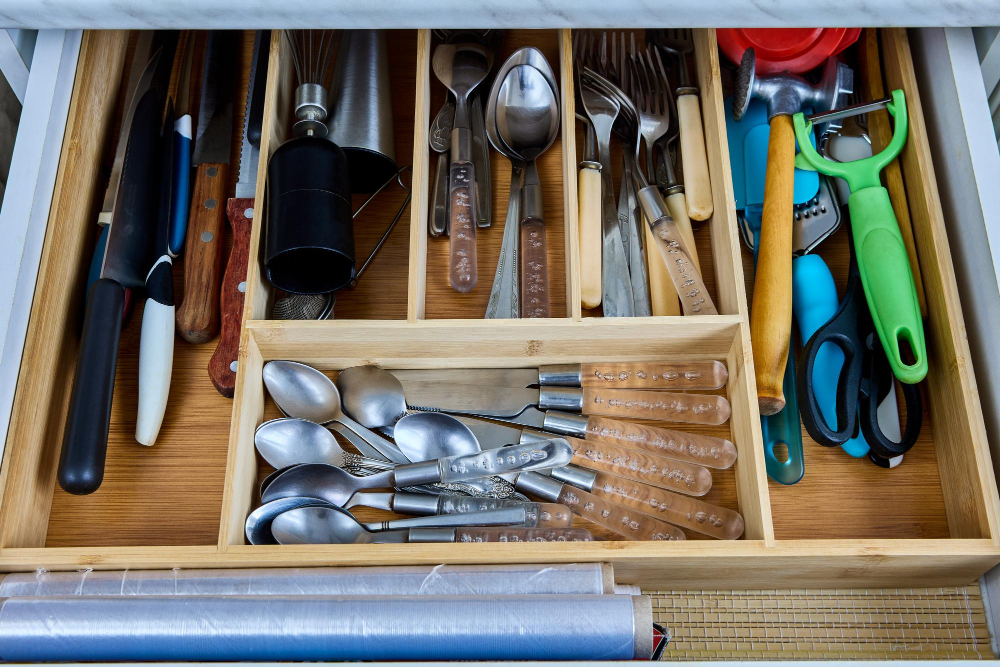
They come in various shapes, sizes, and materials such as wood, plastic or metal. Drawer dividers can be used for utensils like spoons, forks and knives or even larger items like pots and pans.
By using drawer dividers in your kitchen cabinets you can easily separate different types of items into their own compartments making it easier to find what you need when cooking. You’ll no longer have to dig through a pile of utensils just to find the one you’re looking for.
Another great benefit of using drawer dividers is that they help prevent damage caused by stacking items on top of each other which could lead to scratches or chips over time.
Adding Wine Storage

Not only does it keep your bottles organized and easily accessible, but it also adds an elegant touch to the overall look of your kitchen. There are several options for incorporating wine storage into your cabinets or shelving units.
One popular option is installing a built-in wine rack under the upper cabinets or on an open shelf. This type of rack can hold anywhere from six to 12 bottles and keeps them within reach while cooking or entertaining guests.
Another option is installing custom cabinetry with built-in refrigeration units that allow you to store both red and white wines at their optimal temperatures. These types of cabinets can be expensive but are worth considering if you have an extensive collection that requires specific temperature control.
Lastly, freestanding racks made from wood or metal offer flexibility in terms of placement and style options. They come in various sizes ranging from small countertop models to larger floor-standing designs capable of holding dozens of bottles.
Under-Cabinet Lighting
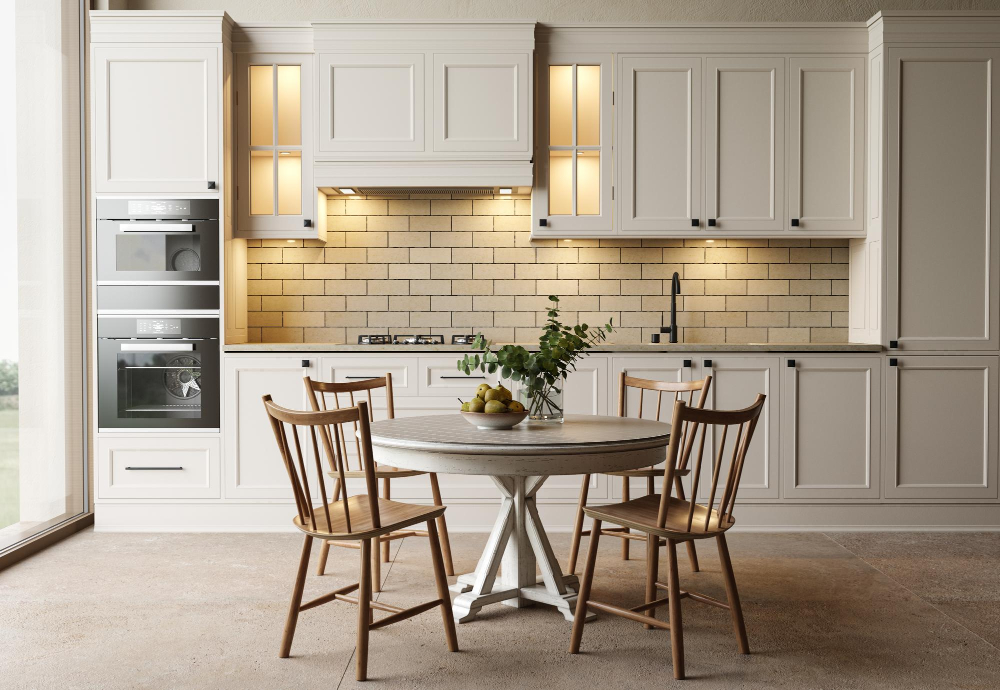
Not only does it provide extra light for cooking, but it also adds ambiance to the room. There are several types of under-cabinet lighting available, including LED strip lights and puck lights.
LED strip lights are easy to install and can be cut to fit any length of cabinet or shelf. Puck lights are small circular fixtures that can be installed individually or in groups depending on the size of your cabinets.
When choosing under-cabinet lighting, consider the color temperature (measured in Kelvin) as well as brightness levels (measured in lumens). Warm white light with a color temperature between 2700K-3000K is ideal for creating a cozy atmosphere while cool white light with a higher color temperature between 4000K-5000K provides brighter illumination perfect for task-oriented activities like cooking.
Installing under-cabinet lighting requires some electrical work so if you’re not comfortable working with electricity, hire an electrician instead. With proper installation and maintenance, adding this type of accent will enhance both functionality and aesthetics within your kitchen space!
Maintaining and Cleaning Cabinets

Regular cleaning will not only help preserve the appearance of your cabinets but also extend their lifespan. To keep your cabinets looking great, start by wiping down the exterior surfaces with a soft cloth or sponge dampened in warm water and mild soap.
Avoid using abrasive cleaners or scouring pads that can scratch the surface.
For stubborn stains or grease buildup, use a mixture of baking soda and water applied with a soft-bristled brush. Rinse thoroughly with clean water afterward.
It’s also essential to avoid exposing wooden cabinet doors to excessive moisture as this can cause warping over time. Use coasters under glasses on countertops near wood cabinetry, wipe up spills immediately after they occur, and ensure proper ventilation in areas where humidity is high.
By following these simple tips for maintaining cleanliness while avoiding damage from moisture exposure over time – you’ll be able to enjoy beautiful new storage solutions that last for years!
FAQ
Can you add cabinets to existing kitchen?
Yes, you can add cabinets to an existing kitchen by utilizing bare wall space above countertops or lower cabinets, which increases storage without major changes.
Can you add new cabinets to old cabinets?
Yes, you can add new cabinets to old cabinets by considering their size, color, and hardware, and coordinating them with your overall kitchen design for a budget-friendly update and increased storage space.
How many cabinets are included in a 10×10 kitchen?
A 10×10 kitchen includes 12 specific-sized cabinets without substitution.
What is the best way to match new cabinets with the existing ones in terms of style and color?
The best way to match new cabinets with existing ones is by closely examining the style, color, and material of the current cabinets and selecting new ones that closely resemble or complement them.
How can you utilize vertical space for additional kitchen cabinet installation?
To utilize vertical space for additional kitchen cabinet installation, consider installing floor-to-ceiling cabinets or stacking smaller cabinets on top of existing ones.
What important factors should be considered when planning to install more cabinets in a kitchen?
Important factors to consider when planning to install more cabinets in a kitchen include available space, kitchen layout, budget, cabinet style and functionality, and overall design aesthetics.
